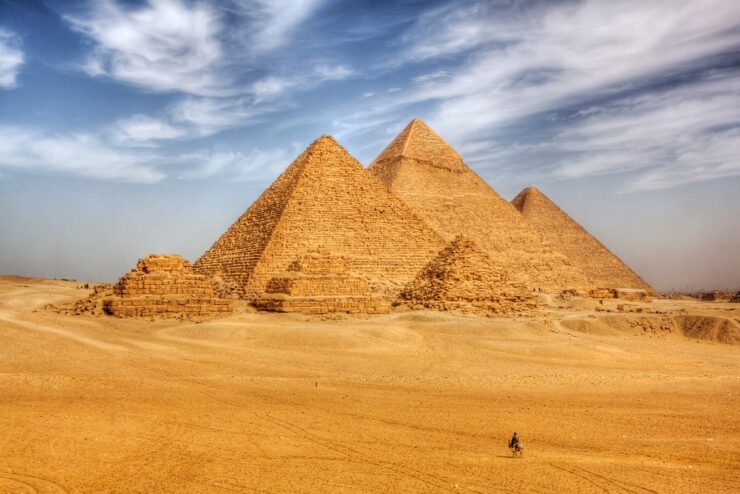Although the exact method used by the Egyptians to construct the pyramids thousands of years ago is unknown, one team of researchers believes they may have found an explanation.
The large stone slabs may have been moved by the Egyptians by making use of the surrounding area, according to historians and archaeologists.
Being aware that The Great Pyramid alone contains approximately 2.3 million slabs of limestone and granite, each weighing as least two tons, is very impressive. It is now believed that the ancient civilization transported the massive stones to the desert through a stream of the Nile.
Five samples of fossilized soil from the Giza floodplain were tested in the beginning by the researchers to see if their theory could be supported. To get the samples, archaeologists had to dig 9 meters (30 feet) down.
The soil samples were examined by laboratory. The investigation was looking for pollen and flora that are often seen near the Nile, which would demonstrate that an old waterway formerly existed there. Their efforts paid off, as they were able to establish the Khufu Branch’s existence, which had transported the stone slabs so they could be used in the construction of the pyramid. It was thought that the tributary dried up around 600 BC.
During their study, the research team also found 61 new plant species.
Hader Sheisha, an environmental geographer, claimed that it would have been “impossible” to erect the pyramids without this tributary.
The research and eventual discovery were inspired by a piece of papyrus that described how an officer named ‘Merer’ had to haul limestone up the Nile to a construction site in Giza. Papyrus was discovered in the Red Sea.
“I was so interested because it confirms that the pyramid’s building materials were transported by water,” Ms Shiesha told The New York Times. “Knowing more about the environment can solve part of the enigma of the pyramid’s construction.”
